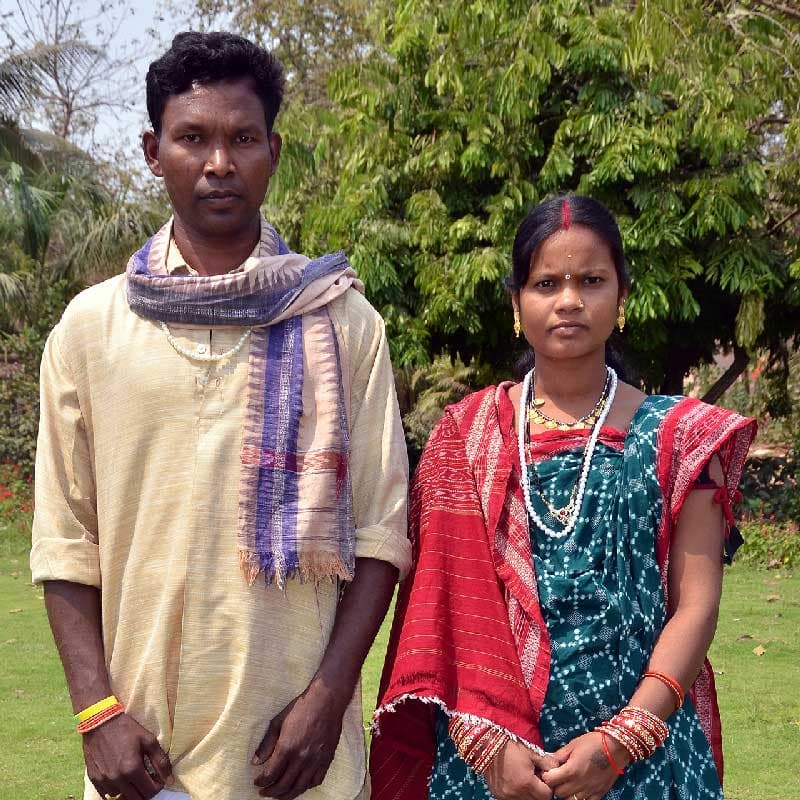TRIBES OF ODISHA
TRIBES OF ODISHA
Binjhal
Binjhwar
Region: Balangir, Baragarh and Nuapara
Population*: 1,37,040
Language: Sambalpuri and Odia
Map: Click Here
Origin: Linguistically belonging to the Dravidian group, the Binjhal are believed to have migrated to Odisha from central India and are probably an offshoot of the Baiga tribe. They claim to be named Binjhal or without sweat for their ability to do hard work by the sweat of the brow.
Occupation: Land owing is a matter of social prestige and this agricultural community practices settled farming. Landless members work as agricultural labour and their main crop is paddy supplemented with pulses, til and sugarcane.
*Scheduled Tribes Population as per Census 2011 data. PVTGs Population as per Micro Project Survey Data, 2010
Binjhal
Binjhwar
Region: Balangir, Baragarh and Nuapara
Population*: 1,37,040
Language: Sambalpuri and Odia
Map: Click Here
Origin: Linguistically belonging to the Dravidian group, the Binjhal are believed to have migrated to Odisha from central India and are probably an offshoot of the Baiga tribe. They claim to be named Binjhal or without sweat for their ability to do hard work by the sweat of the brow.
Occupation: Land owing is a matter of social prestige and this agricultural community practices settled farming. Landless members work as agricultural labour and their main crop is paddy supplemented with pulses, til and sugarcane.
*Scheduled Tribes Population as per Census 2011 data. PVTGs Population as per Micro Project Survey Data, 2010
Binjhal
Binjhwar
Region: Balangir, Baragarh and Nuapara
Population*: 1,37,040
Language: Sambalpuri and Odia
Map: Click Here
Origin: Linguistically belonging to the Dravidian group, the Binjhal are believed to have migrated to Odisha from central India and are probably an offshoot of the Baiga tribe. They claim to be named Binjhal or without sweat for their ability to do hard work by the sweat of the brow.
Occupation: Land owing is a matter of social prestige and this agricultural community practices settled farming. Landless members work as agricultural labour and their main crop is paddy supplemented with pulses, til and sugarcane.
*Scheduled Tribes Population as per Census 2011 data. PVTGs Population as per Micro Project Survey Data, 2010
Binjhal
Binjhwar
Region: Balangir, Baragarh and Nuapara
Population*: 1,37,040
Language: Sambalpuri and Odia
Map: Click Here
Origin: Linguistically belonging to the Dravidian group, the Binjhal are believed to have migrated to Odisha from central India and are probably an offshoot of the Baiga tribe. They claim to be named Binjhal or without sweat for their ability to do hard work by the sweat of the brow.
Occupation: Land owing is a matter of social prestige and this agricultural community practices settled farming. Landless members work as agricultural labour and their main crop is paddy supplemented with pulses, til and sugarcane.
*Scheduled Tribes Population as per Census 2011 data. PVTGs Population as per Micro Project Survey Data, 2010
PVTG Communities
62 Scheduled Tribes
PVTG Communities
62 Scheduled Tribes
PVTG Communities
62 Scheduled Tribes





